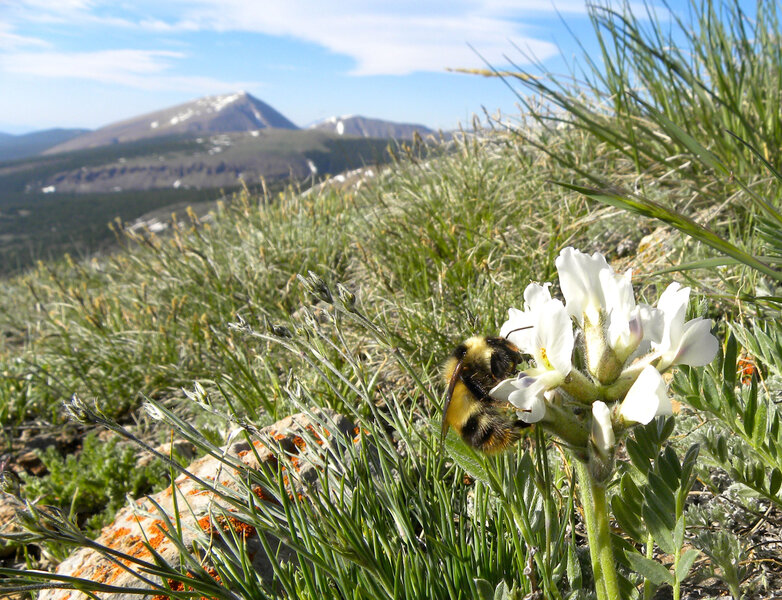Australian bees are real headbangers, say scientists
Loading...
Australia’s blue-banded bee appears to have a pollinating advantage over the North American bumblebee. By buzzing more quickly above a plant’s anther – the stem inside a flower bloom that’s capped with a fuzzy bundle of pollen – the blue-banded bee seems to dislodge pollen more quickly than its American counterpart, according to a team scientists from the US and Australia.
By using audio recordings to study the frequency and length of buzzes, scientists found that the Australian bee vibrates at 350 cycles per second, or hertz, compared to the humble bumblebee, which buzzes at 240 Hz.
But more surprisingly to the team of scientists was that the Australian bee's buzzing involves banging its head, woodpecker style, against the anther, as opposed to the bumblebee’s traditional method of grasping the anther cone with its mandibles and shaking it to release the pollen.
The scientists were able to observe this strange behavior by recording the pollination of tomato plants by each type of bee using cutting-edge cameras that can capture 200 frames per second.
“We were absolutely surprised,” said University of Adelaide bee researcher Katja Hogendoorn to Discovery.com. “We were so buried in the science of it, we never thought about something like this. This is something totally new.”
This novel headbanging technique seemed to release more pollen, allowing the blue-banded bees to spend less time at each flower. To scientists, this suggests that the blue-banded bee may be able to extract pollen more efficiently than bumblebees, and thus cover ground more quickly. If true, Australia’s greenhouses, which use mechanical pollinators, may find the blue-banded bee to be a better choice.
But there’s more research needed to determine if the blue-banded bees are actually more efficient. It’s possible that they are merely fast and sloppy, releasing pollen quickly, but maybe not in a way that successfully fertilizes nearby plants.
“We can’t say that they’re more effective because we didn’t actually measure how many fruits were set by the tomatoes,” explains Callin M. Switzer, a Harvard University researcher who studies bumblebee biomechanics. Dr. Switzer was a co-author with Dr. Hogendoorn and several other researchers of a paper on the head-banging bees, published this month in the journal Arthropod-Plant Interactions.
The next step, says Switzer, is to take both types of bees and allow them to do their work in two different greenhouses to see how well they fertilize and pollinate.
Plus, given advances in high-speed cameras, there are other strange behaviors to discover among the thousands of species of bees.
“We want to film other native bees in Australia to see what they do,” Switzer says.








